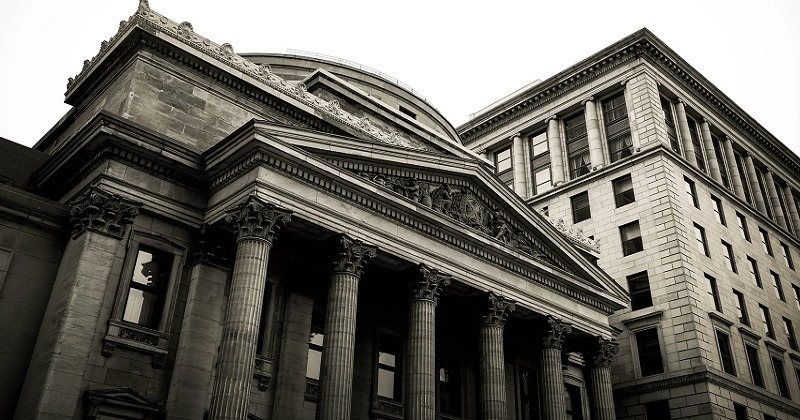
The first bank account that anyone ever opens up is typically a savings account with a savings bank. However, with age, people tend to have different needs and their types of banks will start to vary.
For example, if you need to pay bills, you will open a checking account, or if you need to buy a house or car, you will need to take out a loan.
What Are Financial Institutions?
Financial institutions can include a large range of organizations that offer some sort of money transaction. National and state banks, savings associations, credit unions and mortgage lending businesses are examples of financial institutions.
Central Banks
These types of banks don’t offer products like checking accounts and loans to their customers. However, they play an important role in the economy by regulating the money supply and adjusting interest rates.
In the United States, the Federal Reserve System, or FSS, is the central bank. Their primary five roles are as follows:
- Conduct monetary policy
- Regulate banks
- Stabilize the financial markets
- Oversee federal payments systems
- Protect consumers
The Federal Reserve System also includes 12 independent districts that operate across the country. Commercial banks can borrow from the Fed after they have exhausted other funding sources.
Retail Banks
Retails banks are the banks that everyone is used to, such as the common big name banks or their local banks. They offer all kinds of products that consumers will tend to look for such as checking accounts, savings accounts, credit cards, mortgages and loans.
National Banks
National banks are banks that are known and operate nationwide. Examples of such banks can be Bank of America or Chase. They offer a variety of services for corporate clients and individuals.
Local Banks
These types of banks are generally designed for a specific community and typically have less than $1 billion in assets. Examples of these would be credit unions that are state specific or region specific. These types of banks will tend to offer loans to community businesses or individuals that might have a tough time qualifying at a larger bank.
Commercial Banks
A commercial bank’s primary function is to extend loans to businesses. Like all banking institutions, commercial banks accept deposits and use that money to fund loans. And although anyone can deposit money at a commercial bank, you’ll likely use one for business banking.
In addition to their regular banking services, these types of banks will tend to offer services to suit any business needs. If you don’t need these types of services, you’re probably better off with a national or local bank.
Investment Banks
As the name may suggest, these types of banks are often meant for dealing with businesses’ capital transactions. The best investment banks will be able to facilitate and provide advice on debt and equity offerings, tender offers, financial restructurings, mergers and acquisitions, divestitures and corporate reorganizations, among other services.
Normally, only larger organizations, such as publicly traded companies, will be using this type of bank or will be associated with this type of bank.
Cooperative Banks
Cooperative banks are named this way because they are owned and manged by the members of the bank. These banks tend to operate in underserved communities and provide banking services to people who don’t have access to the larger banks. These can be equal to a credit union in the United States.
Online Banks
A type of bank that has risen in popularity over the past couple of year, online banks are great for savers because it can net some of the highest interest rates. Without the cost of operating physical branches, online banks are able to offer higher rates.
Some online banks will offer 24/7 telephone customer service, so if you ever have any question, you can ask any time. Because they don’t have physical branches, depositing money can be a tricky thing. You will have to deposit at a partner ATM or make a transfer from an existing bank account.
Credit Unions
Credit unions are nonprofit financial institutions that offer banking services to their members, who are also partial owners. Members of a credit union have a common bond, such as working for the same employer, attending the same church or living in the same community.
The structure of a credit union lets profits go back directly to the members in the form of reduced fees, lower interest rates on loans and higher returns on their savings.
Savings and Loan Associations
These financial associations are also known as thrifts. They tend to only offer two types of services: mortgages and savings accounts. However, some do have checking accounts and other types of loans, but they still primarily focus on real estate financing.
 |
 |
Bottom Line
Banks are in a very competitive environment, so they will always try to offer bonuses and promotions to try and get customers to do business with them.
This being said, consider the types of services you’ll need and use that to decide which bank type to choose. For more posts like this, check out our list of bank guides!



